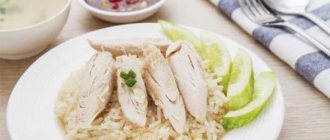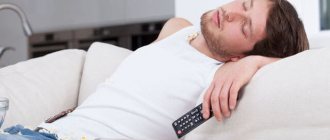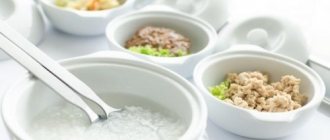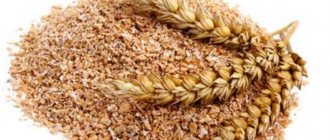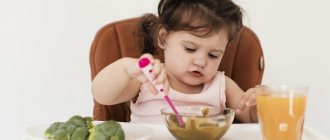Therapeutic nutrition for esophagogastric bleeding. Bleeding from varicose veins of the esophagus is possible with cirrhosis of the liver; gastric - in patients with gastric and duodenal ulcers; with hemorrhagic syndrome caused by impaired functional ability of the liver, blood clotting processes, increased permeability of vascular walls due to hypovitaminosis C and P.
Meals can be prescribed only 1-2 days after the cessation of severe gastric bleeding. In case of moderate bleeding, you can immediately prescribe cold food up to 2 glasses a day in liquid and puree form. Frozen cream, milk with cream, and butter are recommended.
Subsequently, the diet expands to include meat soufflés, soft-boiled eggs, homogenized vegetables, and rosehip decoction. The patient is fed after 2 hours. Then, from the third day, diets are sequentially prescribed. The length of time patients stay on these diets is determined by their condition and the course of the underlying disease.
Animal fats help increase coagulability and more rapid formation of a fibrin clot, stopping bleeding in peptic ulcers complicated by hemorrhagic syndrome. In addition to standard treatment, the patient receives 250 ml of 20% cream for 10-12 days. During the study period, patients are not prescribed Vikasol, calcium chloride, blood or plasma transfusions to obtain more accurate data on the effect of animal fats on the blood coagulation system.
To reduce hemorrhagic syndrome, the diet should include foods rich in vitamins C and P (rosehip decoction, fruit and vegetable juices), K (butter, cream, sour cream).
General rules of nutrition for stomach bleeding:
- products must be processed, steamed or pureed;
- Avoid foods that increase gastric acidity;
- Eating too hot food is unacceptable;
- transmission is excluded;
- anesthesia is applied.
General rules
Gastrointestinal bleeding is bleeding from blood vessels damaged by the disease into the cavity of the gastrointestinal tract.
Gastrointestinal bleeding syndrome occurs as a complication of a number of diseases and can develop in all parts of the gastrointestinal tract: in the esophagus, stomach, duodenum, large and small intestine. This is a formidable syndrome that requires emergency diagnosis and urgent treatment measures. The incidence of bleeding from the upper parts of the digestive tract is much higher (80-90% of cases) than from its lower parts (10-20%, respectively). However, most of them are due to gastric bleeding. The most common causes of bleeding are:
- Ulcerative diseases of the digestive tract (chronic esophagitis , gastric / duodenal , gastroesophageal reflux disease , acute ulcers of the digestive tract - drug-induced, endocrine, stress, due to liver/pancreas diseases, erosive-ulcerative hemorrhagic gastritis , ulcerative colitis , Crohn's disease .
- Non-ulcerative lesions of the gastrointestinal tract: varicose veins of the esophagus/stomach, benign/malignant tumors, Mallory-Weiss syndrome , intestinal diverticula , hemorrhoids , rectal fissures .
Symptoms of gastrointestinal bleeding are largely determined primarily by the degree of blood loss, its intensity, concomitant diseases and the age of the patient. Common symptoms of bleeding from the gastrointestinal tract are: general weakness, dizziness , nausea, thirst, cold sweat, vomiting with blood/the color of coffee grounds, pale skin/mucous membranes, decreased blood pressure, weak/rapid pulse, tarry stools.
Treatment is aimed, first of all, at stopping bleeding and stabilizing the patient’s condition, for which emergency hemostatic therapy is carried out (administration of medications, replenishment of circulating blood volume, use of endoscopic methods - bipolar electrocoagulation, heat coagulation, laser photocoagulation, coagulation with diathermy, colonoscopic electrocautery ), and subsequently - for the treatment of the disease that caused the bleeding.
Nutrition after gastric bleeding, especially of ulcerative etiology, plays a vital role in the patient’s recovery and treatment of the underlying disease. Until the bleeding stops completely, food and liquid intake is prohibited. For gastrointestinal ulcers complicated by bleeding, as a rule, the patient is prescribed fasting for 1-3 days. During this period, if indicated, parenteral nutrition (intravenous) can be used. To do this, two/three-component nutritional mixtures are introduced, providing complete nutricidal support for the patient’s body.
Nutrition after the cessation of minor bleeding begins with liquid/semi-liquid food at room temperature in a volume of 250-400 ml/day, a tablespoon every 1.5-2 hours (mucoid soup, milk, mucous homogenized porridges, cream, rosehip decoction, fruit juices ). You can also use specialized dietary concentrates/baby food concentrates that contain all the necessary high-quality food nutrients in the form of a well-mashed mass.
Next, the diet for gastrointestinal bleeding is compiled within the framework of dietary Tables 1A , 1B and Diet No. 1 (for bleeding from the upper digestive tract) or varieties of therapeutic Table No. 4 (for bleeding from the intestines). Each of them, prescribed sequentially, gradually expands the diet and the degree of sparing of the gastrointestinal mucosa (from the most gentle Table 1A to table No. 1 and 4, moderately sparing the mucous membrane).
The length of time on Diets 1A , 1B , 4A and 4B is determined individually, depending on the patient’s condition. These diets are not physiologically complete, both in terms of the content of food nutrients and energy indicators, and therefore are prescribed for a short period of time, on average within 7-10 days. Difficult to digest foods/any pathogens of secretion/products that irritate the gastrointestinal mucosa are excluded.
The diet for gastric bleeding includes well-mashed, easily digestible food, taken in small portions and is aimed primarily at reducing the excitability of the stomach, reducing the activity of the acid factor and stimulating mucosal regeneration processes.
Then the patients are transferred to physiologically complete therapeutic Diets No. 1 or No. 4 , containing a complete set of all food nutrients that correspond to the norm of energy value. At the same time, despite the expanded range of products, the diet remains the same. In some cases, a pureed version of these diets may initially be prescribed, and after 2-3 months, if you feel well, you are allowed to eat non- pureed food with the addition of raw vegetables/fruits to the diet.
This stepwise expansion of the diet contributes to good adaptation of the gastrointestinal tract to the transition to a common diet. However, it is recommended to limit very hot/cold, spicy, spicy foods and alcohol, and also monitor regular food intake.
Some patients may have iron deficiency anemia , caused by frequent minor bleeding. that such patients in their diet as part of Diets No. 1 and 4 additionally include foods rich in iron: beef, seafood, fish, pork/beef liver, chicken/quail eggs, cereals and wheat bran, butter. At the same time, it is recommended to take iron-containing drugs: Ferrum Lek , Ferrum Maltofer .
Radiation therapy: how is treatment carried out?
Choosing a treatment regimen using radiation therapy
Typically the course of treatment lasts 4-7 weeks. In some cases, when radiation therapy is carried out before surgery to reduce the size of the tumor or to alleviate the patient's condition, the course duration is 2-3 weeks.
Typically, radiation therapy sessions are carried out 5 times a week. Sometimes, in order to protect normal tissues in the irradiation zone, the daily dose is divided into 2-3 sessions. A two-day break at the end of the week allows healthy tissue to recover.
The decision on the total radiation dose and the number of sessions is made by the radiologist based on the size of the tumor and the location of the tumor, its type, your general condition and other types of treatment being performed.
How does a treatment session work?
You will be asked to lie on a treatment table or sit in a special chair. Based on the fields previously marked on the skin, the irradiation zones will be accurately determined. Therefore, you should not move during irradiation. You need to lie calmly, without much tension, breathing should be natural and uniform. You will be in the office for 15-30 minutes.
Before turning on the unit, the medical staff goes to another room and watches you on TV or through a window. You can communicate with him through the loudspeaker.
Some parts of radiotherapy machines may move and make noise during operation. Don't worry - the whole process is controlled.
The irradiation itself is painless. If you feel unwell during radiation exposure, tell your doctor immediately without taking any action on your own. The installation can be turned off at any time.
It is possible that already at the beginning of treatment you will feel a decrease in pain (if any). However, as a rule, the greatest therapeutic effect of radiation therapy occurs after completion of the course of treatment.
To obtain a good therapeutic effect, it is very important that you complete all prescribed treatment sessions.
How to behave during radiation therapy
The body's response to radiation therapy varies from person to person. However, in any case, the radiation therapy process represents a significant burden on the body. Therefore, you may develop a feeling of fatigue during treatment. In this regard, you should rest more. Go to bed when you feel the need.
The sensation usually goes away within 4-6 weeks after completing treatment. However, you should not completely avoid physical activity, which increases the body's defenses and resistance to harmful influences. You can get recommendations on the selection and dosage of physical activity from your doctor and a physical therapy specialist.
During treatment you should follow some rules
- Eat well. Try to stick to a balanced diet (ratio of proteins, fats and carbohydrates 1:1:4). Along with food, you need to take 2.5-3 liters of liquid per day (fruit juices, mineral water, tea with milk).
- Give up bad habits (smoking, drinking alcohol), at least for the period of treatment.
- Do not wear clothing that is tight to the areas of your body being irradiated. Items made from synthetic fabrics and wool are extremely undesirable. Loose, old cotton clothing is preferred. If possible, the areas of skin to be irradiated should be kept open.
- Get outdoors more often.
- Carefully monitor the condition of your skin. Irradiated skin sometimes appears tanned or darkened. By the end of treatment, in some cases, the irradiated areas of the body may become excessively moist (especially in the folds). This largely depends on your individual sensitivity to radiation. Tell your doctor or nurse about any changes you notice. They will give appropriate recommendations.
- Do not use soap, lotions, deodorants, ointments, cosmetics, perfumes, talc or other similar products on the exposed area of your body without consulting your doctor.
- Do not rub or scratch the area of skin being treated. Do not place warm or cold objects (heating pad, ice) on it.
- When going outside, protect the exposed part of the skin from the sun (light clothing, a wide-brimmed hat).
What awaits the patient after radiation?
Side effects of radiation
Radiation therapy, like any other type of treatment, can be accompanied by general and local (in the area of irradiation on tissue) side effects. These phenomena can be acute (short-term, occurring during treatment) and chronic (developing several weeks or even years after the end of treatment).
Side effects of radiotherapy most often occur in tissues and organs directly exposed to radiation. Most side effects that develop during treatment are relatively mild and can be treated with medication or proper nutrition. They usually disappear within three weeks after the end of radiation therapy. Many patients experience no side effects at all.
During treatment, the doctor monitors your condition and the effect of radiation on body functions. If you experience any unusual symptoms during treatment (cough, sweating, fever, unusual pain), be sure to tell your doctor or nurse.
Common side effects of radiation therapy
Emotional condition
Almost all patients undergoing cancer treatment experience some degree of emotional stress. The most common feelings are depression, fear, melancholy, loneliness, and sometimes aggression. As the general condition improves, these emotional disturbances become dull. Communicate more often with family members and close friends. Don't isolate yourself. Try to take part in the lives of the people around you, help them and do not refuse their help. Talk to a therapist. Perhaps he will recommend some acceptable methods of relieving tension.
Fatigue
Feelings of fatigue usually begin within a few weeks of starting treatment. It is associated with significant physical stress on the body during radiation therapy and stress. Therefore, during the period of radiation therapy, you should slightly reduce your overall activity, especially if you are used to working at a strenuous pace. However, do not completely avoid housework; take part in family life. Do things that you enjoy more often, read more, watch TV, listen to music. But only until you feel tired.
If you do not want others to know about your treatment, you can take a vacation during the treatment period. If you continue to work, talk to your manager - he may change your work schedule. Don't be afraid to ask your family and friends for help. They will certainly understand your condition and provide the necessary support. After completing the treatment, the feeling of fatigue gradually disappears.
Blood changes
When large areas of the body are irradiated, the number of leukocytes, platelets and red blood cells in the blood may temporarily decrease. The doctor monitors hematopoietic function using blood tests. Sometimes, with pronounced changes, a break in treatment is taken for one week. In rare cases, medications are prescribed.
Decreased appetite
Radiation therapy usually does not cause nausea or vomiting. However, there may be a decrease in appetite. You must understand that in order to repair damaged tissues, you must eat enough food. Even if you don't feel hungry, you need to make an effort to eat a high-calorie, high-protein diet. It will make it possible to better cope with side effects and improve the results of cancer treatment.
Some nutritional tips during radiation therapy:
- Eat a variety of foods often, but in small portions. Eat when you want, regardless of your daily routine.
- Increase the calorie content of food - add more butter if you like its smell and taste.
- To increase your appetite, use a variety of sauces.
- Between meals, consume kefir, a mixture of milk with butter and sugar, and yogurt.
- Drink more fluids, preferably juices.
- Always have a small supply of foods you like (approved for storage in the clinic where treatment is carried out) and eat them when you feel like eating something.
- While eating, try to create conditions that improve your mood (turn on the TV, radio, or listen to your favorite music while eating).
- Talk to your doctor about drinking a glass of beer with meals to increase your appetite.
- If you have any medical conditions that require you to follow a specific diet, talk to your doctor about ways to vary your diet.
Side effects on the skin
The skin's reaction to radiation is manifested by redness in the area of exposure. In many ways, the development of this phenomenon is determined by your individual sensitivity to radiation. Redness usually appears at 2-3 weeks of treatment. After radiation therapy is completed, the skin in these areas becomes slightly dark, as if tanned.
To prevent an overly pronounced skin reaction, you can use vegetable and animal oils ("Children's", "Velvet" cream, aloe emulsion), which should be applied to the skin after a radiation therapy session.
Before the session, you need to wash off the remaining cream with warm water. However, the skin should be lubricated with appropriate ointments and creams not from the first days of irradiation, but later, when the skin begins to redden. Sometimes, if there is a severe radiation reaction of the skin, a short break in treatment is taken.
For more information about skin care, consult your healthcare professional.
Side effects on the mouth and throat
If you are receiving radiation to the maxillofacial area or neck, in some cases the mucous membrane of the gums, mouth and throat may become red and inflamed, and you may experience dry mouth and pain when swallowing. Usually these phenomena develop in the 2-3rd week of treatment.
In most cases, they go away on their own within a month after completion of radiation therapy.
You can alleviate your condition if you follow the recommendations below:
- Avoid smoking and alcohol during treatment as they also cause irritation and dryness of the oral mucosa.
- Rinse your mouth at least 6 times a day (after sleep, after each meal, at night). The solution used must be at room temperature or refrigerated. What solutions are best for rinsing the mouth can be found out from your doctor.
- Twice a day, gently, without pressing hard, brush your teeth with a soft toothbrush or cotton swab (after use, rinse the brush thoroughly and store dry).
- Consult your dentist for the right toothpaste. It should not be harsh and irritate the mucous membranes.
- If you use dentures, remove them before your radiation therapy session. If dentures rub your gums, it is better to temporarily stop using them.
- Do not eat sour, spicy foods.
- Try to eat soft foods (baby food, purees, cereals, puddings, jellies, etc.). Soak hard and dry foods in water.
Side effects on the mammary gland
When undergoing radiation therapy for a breast tumor, the most common side effect is skin changes (see section "Side effects on the skin"). In addition to following the above skin care recommendations, you should avoid wearing a bra during the treatment period. If you feel uncomfortable without it, use a soft bra.
Radiation therapy may cause pain and swelling in the breast area, which will disappear or gradually decrease after treatment is completed. The irradiated mammary gland can sometimes become larger (due to fluid accumulation) or smaller (due to tissue fibrosis).
In some cases, these deformations of the shape of the gland can persist for the rest of life. You can find out more about the nature of changes in the shape and size of the mammary gland from your attending physician.
Radiation therapy may impair shoulder motion. Consult a physical therapy specialist about what exercises you should do to prevent this complication.
In some patients, radiation therapy may cause swelling of the arm on the side of the irradiated gland. This swelling may develop even 10 years or more after completion of treatment. Therefore, it is necessary to carefully monitor the condition of your hand and adhere to certain rules of behavior:
- Avoid heavy lifting (no more than 6-7 kg), vigorous movements requiring excessive effort (pushing, pulling), or carrying a bag over your shoulder on the side of the irradiated breast.
- Do not allow blood pressure to be taken or injections (blood drawn) into the arm on the side being treated.
- Do not wear tight-fitting jewelry or clothing on this arm. If you accidentally damage the skin of your hand, treat the wound with alcohol (but not alcohol tincture of iodine!) and cover the wound with a bactericidal plaster or apply a bandage.
- Protect your hand from direct sunlight.
- Maintain your optimal weight through a balanced, low-salt, high-fiber diet.
- If you experience even occasional hand swelling that goes away after a night's sleep, contact your doctor immediately.
Side effects on the chest organs
During radiation therapy, you may have difficulty swallowing due to radiation inflammation of the esophageal mucosa. You can make eating easier by eating small meals more often, thinning thick foods, and cutting solid foods into pieces. Before eating, you can swallow a small piece of butter to make it easier to swallow.
You may develop a dry cough, fever, change in sputum color, and shortness of breath. If you notice these symptoms, tell your doctor immediately. He will prescribe special drug treatment.
Side effects on the rectum
This may occur during radiation therapy for cancer of the rectum or other pelvic organs. With radiation damage to the intestinal mucosa, pain and bleeding may appear, especially with difficult stool.
In order to prevent or reduce the severity of these phenomena, it is necessary to prevent constipation from the first days of treatment. This can be easily achieved by organizing an appropriate diet. It is necessary to additionally include kefir, fruits, raw carrots, stewed cabbage, prune infusion, tomato and grape juice in the diet.
If, despite following the recommendations, you experience stool retention for more than 1-2 days, be sure to inform your doctor about this.
Side effects on the bladder
Radiation therapy sometimes causes inflammation of the lining of the bladder. This can lead to frequent painful urination and increased body temperature. Occasionally, the urine becomes reddish in color. If you notice these symptoms, tell your doctor. These complications require special drug treatment.
How to behave after completion of radiation therapy (post-radiation period)
After completing a course of radiotherapy, it is very important to periodically check the results of your treatment. You should have regular follow-up examinations with a radiologist or the doctor who referred you for treatment. The time of the first follow-up examination will be determined by the attending physician upon discharge.
The schedule for further observation will be drawn up by the doctor at the clinic or dispensary. These same specialists will, if necessary, prescribe further treatment or rehabilitation for you.
Symptoms for which you should consult a doctor without waiting for the next follow-up examination:
- the occurrence of pain that does not go away on its own within several days;
- nausea, diarrhea, loss of appetite;
- increased body temperature, cough;
- the appearance of a tumor, swelling, unusual rashes on the skin;
- development of limb edema on the irradiated side.
Care for irradiated skin
After completion of treatment, it is necessary to protect the irradiated skin from injury and sunlight for at least a year. Be sure to lubricate the irradiated areas of the skin with a nourishing cream 2-3 times a day, even when it has healed after treatment. Do not treat your skin with irritating products.
Ask your doctor which cream is best to use. Do not try to erase the marks left after irradiation; they will gradually disappear on their own. Give preference to showering over bathing. Do not use cold or hot water. When taking a shower, do not rub the irradiated areas of the skin with a washcloth. If irritation of irradiated skin persists for a long time, consult a doctor. He will prescribe appropriate treatment for you.
Remember: mild pain in the irradiated area is common and quite common. If it occurs, you can take mild painkillers. If pain is severe, consult a doctor.
Relationships with relatives and friends
Radiation therapy does not make your body radioactive. It should also be clearly understood that cancer is not contagious. Therefore, do not be afraid to communicate with other people, friends and relatives during and after treatment.
If necessary, you can invite those closest to you to have a joint conversation with your doctor.
Intimate relationships
In most cases, radiation therapy does not have a significant effect on sexual activity. The decrease in interest in intimate relationships is caused mainly by the general physical weakness that occurs during this treatment and stress. Therefore, do not avoid intimate relationships, which are an important part of a fulfilling life.
Professional activity
When radiation therapy is performed on an outpatient basis, some patients do not stop working at all during the course of treatment. If you did not work during treatment, you can return to your professional activity as soon as you feel that your condition allows it.
If your job involves strenuous physical activity or occupational hazards, you should consider changing your working conditions or profession.
Leisure
Pay more attention to rest. You will regain your strength over time, so do not return to full physical activity right away. Visit theaters and exhibitions. This will allow you to take your mind off unpleasant thoughts.
Make it a rule to take daily walks in the fresh air (walks in the park, in the forest). Communicate more with friends and family. With the knowledge of your attending physician, consult with a physical therapist and psychotherapist. They will help you choose adequate physical activity (health-improving gymnastics) and suggest ways to overcome stress.
Conclusion
We hope that this information will help you get rid of unnecessary nervous tension, make it easier to undergo radiation therapy, and understand what awaits you after it. All this contributes to your recovery.
For more detailed information on issues related to your health, please contact your physician.
Authorized Products
Nutrition after gastrointestinal bleeding includes the following foods:
- Soups made with vegetable broth/potato broth with pureed cereals (buckwheat, semolina, rolled oats, rice) and vegetables, seasoned with an egg-milk mixture. Later, pureed chicken is added to soups.
- Steamed/boiled meat dishes (cutlets, soufflé, quenelles, puree, meatballs, zrazy) from beef, lean pork, rabbit, chicken and turkey.
- Low-fat sea/river fish (boiled, steamed, baked) chopped
- Porridge (buckwheat, oatmeal rice, semolina), thin noodles, vermicelli, boiled in milk or water, boiled to a semi-viscous state and, if necessary, pureed.
- Vegetables (cauliflower, potatoes, beets, carrots, young peas), boiled and pureed (mashed potatoes, souffle). Garden greens in small quantities.
- Stale/dried bread, low-fat cookies, dry biscuits.
- Dairy (fresh non-sour cottage cheese, milk, cream, sour cream, non-sour kefir and yogurt), grated mild cheese, 2 soft-boiled chicken eggs or in the form of a steam omelet.
- Appetizers include liver pate, lean herring, sturgeon caviar, salad of boiled meat and boiled vegetables, jellied fish, lean ham.
- Sweet berries and fruits (baked and mashed) in the form of jelly, puree, jelly, compote. Desserts include marshmallows, marshmallows, milk jelly, meringues, honey, and non-sour jam.
- Drinks: rosehip decoction, juices from non-acidic fruits, tea with milk/cream, herbal tea
- Meatballs, cutlets, meatballs.
Table of permitted products
| Proteins, g | Fats, g | Carbohydrates, g | Calories, kcal | |
Vegetables and greens | ||||
| zucchini | 0,6 | 0,3 | 4,6 | 24 |
| cauliflower | 2,5 | 0,3 | 5,4 | 30 |
| potato | 2,0 | 0,4 | 18,1 | 80 |
| carrot | 1,3 | 0,1 | 6,9 | 32 |
| beet | 1,5 | 0,1 | 8,8 | 40 |
| pumpkin | 1,3 | 0,3 | 7,7 | 28 |
Fruits | ||||
| apricots | 0,9 | 0,1 | 10,8 | 41 |
| watermelon | 0,6 | 0,1 | 5,8 | 25 |
| bananas | 1,5 | 0,2 | 21,8 | 95 |
| melon | 0,6 | 0,3 | 7,4 | 33 |
| nectarine | 0,9 | 0,2 | 11,8 | 48 |
| peaches | 0,9 | 0,1 | 11,3 | 46 |
| apples | 0,4 | 0,4 | 9,8 | 47 |
Berries | ||||
| strawberry | 0,8 | 0,4 | 7,5 | 41 |
| raspberries | 0,8 | 0,5 | 8,3 | 46 |
Cereals and porridges | ||||
| buckwheat (kernel) | 12,6 | 3,3 | 62,1 | 313 |
| semolina | 10,3 | 1,0 | 73,3 | 328 |
| cereals | 11,9 | 7,2 | 69,3 | 366 |
| white rice | 6,7 | 0,7 | 78,9 | 344 |
Flour and pasta | ||||
| noodles | 12,0 | 3,7 | 60,1 | 322 |
Bakery products | ||||
| white bread crackers | 11,2 | 1,4 | 72,2 | 331 |
Confectionery | ||||
| jam | 0,3 | 0,2 | 63,0 | 263 |
| jelly | 2,7 | 0,0 | 17,9 | 79 |
| marshmallows | 0,8 | 0,0 | 78,5 | 304 |
| meringues | 2,6 | 20,8 | 60,5 | 440 |
| paste | 0,5 | 0,0 | 80,8 | 310 |
| Maria cookies | 8,7 | 8,8 | 70,9 | 400 |
Raw materials and seasonings | ||||
| honey | 0,8 | 0,0 | 81,5 | 329 |
| sugar | 0,0 | 0,0 | 99,7 | 398 |
| milk sauce | 2,0 | 7,1 | 5,2 | 84 |
Dairy | ||||
| milk | 3,2 | 3,6 | 4,8 | 64 |
| kefir | 3,4 | 2,0 | 4,7 | 51 |
| cream | 2,8 | 20,0 | 3,7 | 205 |
| sour cream | 2,8 | 20,0 | 3,2 | 206 |
| curdled milk | 2,9 | 2,5 | 4,1 | 53 |
Cheeses and cottage cheese | ||||
| cottage cheese | 17,2 | 5,0 | 1,8 | 121 |
Meat products | ||||
| boiled beef | 25,8 | 16,8 | 0,0 | 254 |
| beef liver | 17,4 | 3,1 | 0,0 | 98 |
| boiled beef tongue | 23,9 | 15,0 | 0,0 | 231 |
| boiled veal | 30,7 | 0,9 | 0,0 | 131 |
| rabbit | 21,0 | 8,0 | 0,0 | 156 |
Bird | ||||
| boiled chicken | 25,2 | 7,4 | 0,0 | 170 |
| turkey | 19,2 | 0,7 | 0,0 | 84 |
Eggs | ||||
| chicken eggs | 12,7 | 10,9 | 0,7 | 157 |
Fish and seafood | ||||
| black caviar | 28,0 | 9,7 | 0,0 | 203 |
| salmon caviar granular | 32,0 | 15,0 | 0,0 | 263 |
Oils and fats | ||||
| butter | 0,5 | 82,5 | 0,8 | 748 |
| ghee | 0,2 | 99,0 | 0,0 | 892 |
Non-alcoholic drinks | ||||
| mineral water | 0,0 | 0,0 | 0,0 | — |
| coffee with milk and sugar | 0,7 | 1,0 | 11,2 | 58 |
| black tea with milk and sugar | 0,7 | 0,8 | 8,2 | 43 |
Juices and compotes | ||||
| apricot juice | 0,9 | 0,1 | 9,0 | 38 |
| carrot juice | 1,1 | 0,1 | 6,4 | 28 |
| pumpkin juice | 0,0 | 0,0 | 9,0 | 38 |
| * data is per 100 g of product | ||||
Table of permitted and prohibited products
Nutrition for bleeding stomach ulcers helps improve the patient's condition, mainly by limiting carbohydrates. All products that stimulate the secretion of gastric juice or irritate the mucous membrane of the stomach or intestines are completely excluded from the menu. The list of prohibited and permitted products includes:
| You can eat | Eating is prohibited | |
| First meal | Dairy, vegetable, cereal slimy soups. | Meat, fish, mushroom broths. |
| Boiled meat | Beef, veal, rabbit, chicken (without skin). Boiled eggs are allowed. | Pork, lamb, goose, duck. |
| Boiled or steamed fish | Low-fat varieties - cod, perch, pike. | Fatty varieties, salted fish. |
| Vegetables | Zucchini, potatoes, carrots, beets, pumpkin. | Vegetables rich in coarse fiber: cabbage, mushrooms, radishes, onions, cucumbers, sorrel, legumes, spinach, horseradish. |
| Cereals and porridges | Buckwheat, oatmeal, white rice, semolina. | Corn, pearl barley, millet, barley, brown rice. |
| Bakery products | Rusks, yesterday's bread made from whole grain flour. | Wheat bread |
| Dessert | Marshmallows, marshmallows, meringue, jam, jelly, sweet fruits. | Ice cream, candies, chocolate, pastries, dried fruits. |
| Sausages | Sausages, sausages, ham, smoked products. | |
| Beverages | Carrot, pumpkin juice, mineral water, tea, weak coffee with milk. | Alcohol, kvass, sweet soda. |
| Dairy | Milk, kefir, sour cream, cottage cheese, yogurt. | High fat cheese |
Fully or partially limited products
The diet for gastrointestinal bleeding includes the exclusion of the following foods:
- Any fresh bread, butter/puff pastry, pastries, pasta, dumplings, pancakes.
- Concentrated broths from meat and fish and rich decoctions of vegetables for soups, first courses based on them.
- Fatty types of red meat (pork, lamb), duck, goose, smoked and canned meat, animal fats.
- Fermented milk products with high acidity.
- Vegetables/fruits rich in coarse fiber (peas, rutabaga, radishes, turnips, white cabbage, sorrel, dill, onions, parsley beans, spinach, fruits with peel), sour fruits and berries, dried fruits, mushrooms.
- Fatty sea/river fish, canned fish.
- Difficult to digest porridges made from pearl barley, millet, barley and corn.
- Chocolate, ice cream.
- Canned vegetables, pickled/pickled vegetables, hard-boiled and fried eggs, hot sauces, seasonings and spices.
Table of prohibited products
| Proteins, g | Fats, g | Carbohydrates, g | Calories, kcal | |
Vegetables and greens | ||||
| vegetables legumes | 9,1 | 1,6 | 27,0 | 168 |
| swede | 1,2 | 0,1 | 7,7 | 37 |
| cabbage | 1,8 | 0,1 | 4,7 | 27 |
| sauerkraut | 1,8 | 0,1 | 4,4 | 19 |
| green onion | 1,3 | 0,0 | 4,6 | 19 |
| bulb onions | 1,4 | 0,0 | 10,4 | 41 |
| cucumbers | 0,8 | 0,1 | 2,8 | 15 |
| canned cucumbers | 2,8 | 0,0 | 1,3 | 16 |
| white radish | 1,4 | 0,0 | 4,1 | 21 |
| turnip | 1,5 | 0,1 | 6,2 | 30 |
| canned tomatoes | 1,1 | 0,1 | 3,5 | 20 |
| horseradish | 3,2 | 0,4 | 10,5 | 56 |
| spinach | 2,9 | 0,3 | 2,0 | 22 |
| sorrel | 1,5 | 0,3 | 2,9 | 19 |
Mushrooms | ||||
| mushrooms | 3,5 | 2,0 | 2,5 | 30 |
Cereals and porridges | ||||
| corn grits | 8,3 | 1,2 | 75,0 | 337 |
| pearl barley | 9,3 | 1,1 | 73,7 | 320 |
| millet cereal | 11,5 | 3,3 | 69,3 | 348 |
| barley grits | 10,4 | 1,3 | 66,3 | 324 |
Bakery products | ||||
| wheat bread | 8,1 | 1,0 | 48,8 | 242 |
Confectionery | ||||
| candies | 4,3 | 19,8 | 67,5 | 453 |
| pastry cream | 0,2 | 26,0 | 16,5 | 300 |
Ice cream | ||||
| ice cream | 3,7 | 6,9 | 22,1 | 189 |
Cakes | ||||
| cake | 4,4 | 23,4 | 45,2 | 407 |
Chocolate | ||||
| chocolate | 5,4 | 35,3 | 56,5 | 544 |
Raw materials and seasonings | ||||
| mustard | 5,7 | 6,4 | 22,0 | 162 |
| ginger | 1,8 | 0,8 | 15,8 | 80 |
| ketchup | 1,8 | 1,0 | 22,2 | 93 |
| mayonnaise | 2,4 | 67,0 | 3,9 | 627 |
| ground black pepper | 10,4 | 3,3 | 38,7 | 251 |
| chilli | 2,0 | 0,2 | 9,5 | 40 |
Meat products | ||||
| pork | 16,0 | 21,6 | 0,0 | 259 |
| salo | 2,4 | 89,0 | 0,0 | 797 |
| ham | 22,6 | 20,9 | 0,0 | 279 |
Sausages | ||||
| dry-cured sausage | 24,1 | 38,3 | 1,0 | 455 |
| sausages | 10,1 | 31,6 | 1,9 | 332 |
| sausages | 12,3 | 25,3 | 0,0 | 277 |
Bird | ||||
| smoked chicken | 27,5 | 8,2 | 0,0 | 184 |
| duck | 16,5 | 61,2 | 0,0 | 346 |
| smoked duck | 19,0 | 28,4 | 0,0 | 337 |
| goose | 16,1 | 33,3 | 0,0 | 364 |
Fish and seafood | ||||
| dried fish | 17,5 | 4,6 | 0,0 | 139 |
| smoked fish | 26,8 | 9,9 | 0,0 | 196 |
| canned fish | 17,5 | 2,0 | 0,0 | 88 |
Oils and fats | ||||
| creamy margarine | 0,5 | 82,0 | 0,0 | 745 |
| animal fat | 0,0 | 99,7 | 0,0 | 897 |
| cooking fat | 0,0 | 99,7 | 0,0 | 897 |
Alcoholic drinks | ||||
| white dessert wine 16% | 0,5 | 0,0 | 16,0 | 153 |
| vodka | 0,0 | 0,0 | 0,1 | 235 |
| cognac | 0,0 | 0,0 | 0,1 | 239 |
| beer | 0,3 | 0,0 | 4,6 | 42 |
Non-alcoholic drinks | ||||
| bread kvass | 0,2 | 0,0 | 5,2 | 27 |
| cola | 0,0 | 0,0 | 10,4 | 42 |
| sprite | 0,1 | 0,0 | 7,0 | 29 |
| tonic | 0,0 | 0,0 | 8,3 | 34 |
| energy drink | 0,0 | 0,0 | 11,3 | 45 |
| * data is per 100 g of product | ||||
Reviews and results
Diet for gastrointestinal bleeding is the most important treatment method after stopping the bleeding. Feedback from an overwhelming number of patients indicates the positive impact of dietary nutrition on the restoration of the body in general and on the state of the gastrointestinal tract in particular.
- “... Stomach ulcer complicated by bleeding. They admitted me to the hospital and prescribed treatment, including a diet, starting on the 2nd day. I eat very little at a time, until everything is pureed and steamed. Of course, it is difficult to tolerate such a diet, practically without spices, if you ate normally before. But the doctors said that diet is now my ticket to life. Therefore, I will have to get used to many restrictions, including alcohol, and my wife will have to learn how to cook dietary dishes.”
